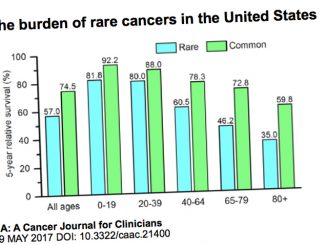Relatively low levels of investments from major funders, no recent acceleration in funding observed, and a decline in new commitments to funding since 2011: this is the main – and somehow discouraging – picture of investments for childhood cancer research according to a systematic analysis published in The Lancet Oncology. Despite the efforts by the WHO Global Initiative for Childhood Cancer launched in September 2018, these cancers are still missing from many global health agendas.
Moreover, disparities in access and quality of care are also contributing to the great variation in outcomes observed worldwide.
“Childhood cancers caused an estimated 75,000 deaths in children aged 0–14 years in 2018, of which 90% were in low-income and middle-income countries” said Eva M Loucaides, University College London Hospital, and colleagues, who analysed the pattern of funding for childhood cancer research as a proxy for research activity in the field. “Judicious investment in research is particularly urgent” they added.
Using data from an interlinked research information system (Dimension database, provided by Digital Science), Loucaides and colleagues systematically analysed 3,414 grants from 115 funders across 35 countries between 2008 and 2016, categorized by different criteria like tumour type, funding source and research focus. During the study period, a total of 2 billion US$ was invested in childhood cancer research, 37.9% for general childhood cancer, 22% for leukaemias and 16.2% for Central Nervous System tumours. More than two-thirds of the whole budget were awarded to (77%) or came from (78%) institutions based in the USA.
This is consistent with the USA’s top global position in supporting health research and development in most domains, and according to the authors suggests that global childhood cancer research is vulnerable to changes in the USA’s overall national spending on research.
Finally, data on the distributions of funding by study type mirrored the bottleneck in bringing discoveries from the bench to the bedside, with preclinical research receiving almost 60% of the whole available funding, compared to lower investments in clinical trials (25.7%) and health-care delivery research (5.5%). “The momentum for universal health coverage for children must be met with major new public and philanthropic commitments in global childhood cancer research” researchers conclude, asking for full transparency of all funders and their contributions in the context of a global strategy on childhood cancer.






Leave a Reply